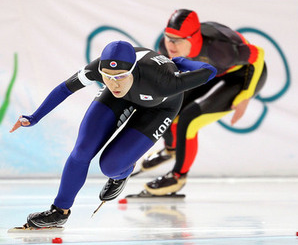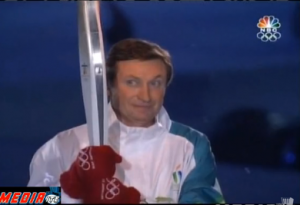The Other Ways We’re Watching the Olympics
 I really do enjoy the Winter Olympics, and I think that most Americans do recognize them as the massive media event that they are billed as. It is very different from the Summer games, though. None of us can run 100 yards in nine seconds, and the draw there is the unbelievable athleticism on display. But there’s something accessible about the snow and ice sports – I’ve sledded before, I’ve pushed a broom on ice, of course I can do that.
I really do enjoy the Winter Olympics, and I think that most Americans do recognize them as the massive media event that they are billed as. It is very different from the Summer games, though. None of us can run 100 yards in nine seconds, and the draw there is the unbelievable athleticism on display. But there’s something accessible about the snow and ice sports – I’ve sledded before, I’ve pushed a broom on ice, of course I can do that.
When the events and ceremonies kicked off this past weekend, fantastic numbers turned into the broadcasts (averaging 33 million and 68 million-strong overall, according to Nielsen). But despite NBC’s massive on-air Olympic investment, this time around plenty of people will get their Olympic fix without watching television at all. Today, there are more ways to interact with the content through digital video and more ways to talk about it through social networks than ever before.
In a column a few weeks ago, I hinted at the fact that there are several new media channels in our lives that may impact how information is shared around a global-scale sporting event like the Olympics. There were plenty of negatives in that shift, and a lot of them may be felt by broadcasting network when they are counting ad revenues and calculating investments. The positives, though, are how quickly must-watch moments rise in attention, and how we interact in response. Whether it’s an amazing 2 and a half minutes of the Gretzky Face or an exhilarating end to the Women’s Moguls, the online channel of social media is changing the way we watch. (Also: check out Geekosystem on an excellent way some of these Tweets are being displayed).
 Whereas Beijing was just before the tipping point of the Twitter era, this Olympics falls smack in the middle of it, with both connectivity and media producers at an all time high. NBC really has upped its game this time when it comes to pushing online video, and a lot of that is due to the evolution of Microsoft’s Silverlight. The application is being impressively used on NBCOlympics.com to provide hundreds of hours of live video, buffer free, and at HD resolutions – with a few new features, too, including on demand controls for individual instant replay. It really does give you all the tools you’ll need to watch Curling from the comfort of your cubicle.
Whereas Beijing was just before the tipping point of the Twitter era, this Olympics falls smack in the middle of it, with both connectivity and media producers at an all time high. NBC really has upped its game this time when it comes to pushing online video, and a lot of that is due to the evolution of Microsoft’s Silverlight. The application is being impressively used on NBCOlympics.com to provide hundreds of hours of live video, buffer free, and at HD resolutions – with a few new features, too, including on demand controls for individual instant replay. It really does give you all the tools you’ll need to watch Curling from the comfort of your cubicle.
Also, it’s worth noting that some of the best moments from the ceremonies were shown in even greater detail, including an even more robust version of k.d. lang’s rendition of Hallelujah, an interesting foil to some of the initial backlash about NBC’s broadcast of her moment.
The other part that will be fascinating is the timeshifting effect that NBC won’t be able to control. Try as they might, videos will end up on YouTube, and the most impressive (or biggest flops) will find a way to be passed along. We’ll talk about the spills and thrills on Facebook and Twitter, and whereas that may have been a detriment if around in 2006 given the way the Torino games turned out for the big name athletes, it could easily be an audience driver, too.
Torch malfunctions are just one example; the tragedy of Georgian Luger Nodar Kumaritashvili certainly developed significant conversation as not only the news, but how NBC handled it, drove Twitter discussions on Friday. That awareness made the introduction of the Georgian delegation that much more noteworthy.
All of this in Vancouver may really be a warm-up, though, and the way digital video and social media play into the events may dictate some of the coverage of June’s World Cup. The Winter Olympics are a fringe event when compared to O Jogo Bonito, and the global scale will add an extra dimension to watch on whatever social network we have in four months. Add in new developments in digital video technology, and the computer screen may really become the most important home for broadcast media.
Disclosure: Microsoft and GE, NBC’s owner, are both clients of my employer; however, opinions contained within this piece are my own.
Dave Levy spends most of his day working on Edelman’s Digital Public Affairs team in Washington, DC. A media researcher on the side and a self-proclaimed geek, he blogs often about how traditional media adapts – or tries to adapt – to the growing social media world at State of the Fourth Estate. Follow Dave on Twitter here.
Photo above: Lee Sang-Hwa of South Korea and Jenny Wolf of Germany in women’s speed skating 500 m final, by Jamie Squire/Getty Images, via SBNation; “Gretzky Face” via Mediaite.





Comments
↓ Scroll down for comments ↓